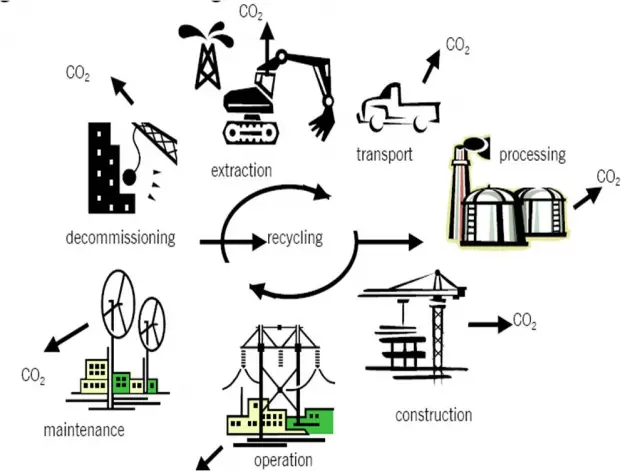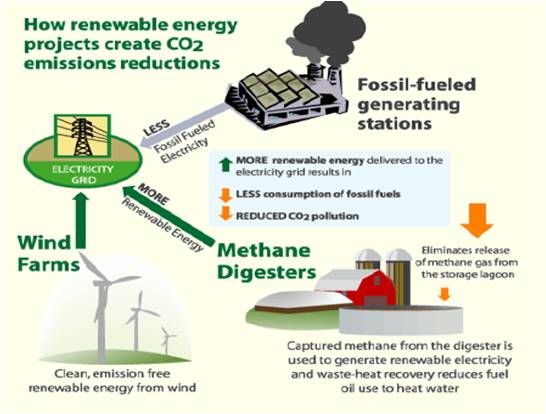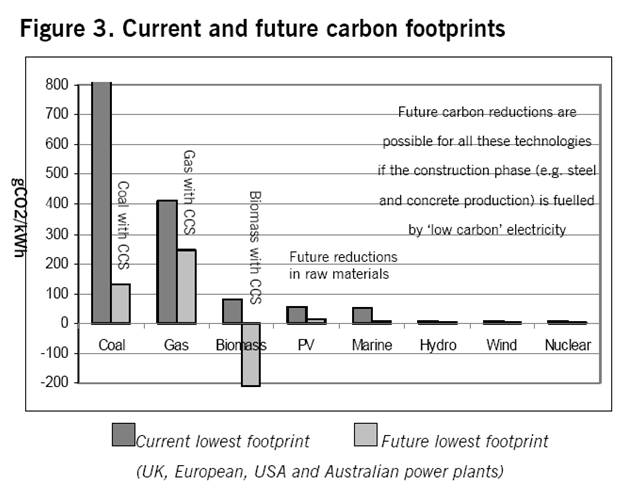WHAT IS CARBON FOOTPRINT?
- A carbon footprint is a measure of the impact our activities have on the environment, and in particular climate change. It relates to the amount of greenhouse gases produced in our day-to-day lives through burning fossil fuels for electricity, heating and transportation etc.
- The carbon footprint is a measurement of all greenhouse gases we individually produce and has units of tonnes (or kg) of carbon dioxide equivalent.
A carbon footprint is made up of the sum of two parts, the primary footprint (shown by the green slices of the pie chart) and the secondary footprint (shown as the yellow slices).

- The primary footprint is a measure of our direct emissions of CO2 from the burning of fossil fuels including domestic energy consumption and transportation (e.g. car and plane). We have direct control of these.
- The secondary footprint is a measure of the indirect CO2 emissions from the whole lifecycle of products we use – those associated with their manufacture and eventual breakdown. To put it very simply – the more we buy the more emissions will be caused on our behalf.
Sources of GHGs
- Carbon Dioxide
- Fuels for Energy and Transport, Manufacturing Processes
- Sulphur hexafluoride
- Magnesium smelting, high voltage switchgear, electronics manufacturing
- PFCs
- Aluminium manufacture, electronics manufacture
- Methane
- Waste (Landfills, natural activity)
- Nitrous Oxide
- Chemical manufacture and agriculture
- HFCs
- Refrigerants, chemical manufacture, foams & aerosols
Life Cycle Co2 Emissions For Electricity Generation Technologies

SECONDARY EMISSIONS
|
Appliance |
Usage |
Per Use |
Cost per year |
kg CO2 per year |
| Microwave Oven | 96 times per year | 0.945 kWh per use( based on 1.39 kWh for full power and 0.5 kWh for defrosting) | £9.07 | 39 |
| Washing Machine | 187 washes per year | EU energy label A-rated gives an average consumption at 40°C using a 2kg load to be 0.63 kWh | £11.78 | 51 |
| Fridge-Freezer A spec | 24 hours a day | 408 kWh per year | £40.80 | 175 |
| Standard Light Bulb | 4 hours a day | 100 W | £14.60 | 63 |
| Low Energy Light Bulb | 4 hours a day | 18 W | £2.63 | 11 |
| Primary TV – CRT 34-37 inch | On Power- 6.5 hours a day | 198.5 W | £47.09 | 203 |
| Primary TV – LCD | Standby-17.5 hours a day | 1.8 W | £1.15 | 5 |
CALCULATING CARBON FOOTPRINTS
- Carbon footprints are calculated using a method called life cycle assessment (LCA), and is also referred to as the ‘cradle-to-grave’ approach 2 This method is used to analyse the cumulative environmental impacts of a process or product through all the stages of its life.
- It takes into account energy inputs and emission outputs throughout the whole production chain from exploration and extraction of raw materials to processing, transport and final use.
- The LCA method is internationally accredited by ISO 14000 standards. The robustness of the method means that although carbon footprints vary between individual power plants, the ranking of electricity generation technologies does not change with different sources of data.
Carbon Factors
– Energy consumption x Carbon Factor
Example: Btu x kg/Btu = kg of CO2 e
Baseline building model without CHP
– Electricity purchased from IN utility
> Indiana generation mix is 99% fossil fuel
– Heat from central boiler
REDUCING A CARBON FOOTPRINT
- The carbon footprint can be efficiently and effectively reduced by using a Carbon Diet or applying the following steps:
- Life Cycle Assessment (LCA) to accurately determine the current carbon footprint.
- Identification of hot-spots in terms of energy consumption and associated CO2-emissions.
- Where possible, changing to another electricity company to switch to buying electricity from renewable sources (from wind turbines, solar panels or hydroelectrically plants -or- from nuclear power plants.
- Optimization of energy efficiency and, thus, reduction of CO2-emissions and reduction of other GHG emissions contributed from production processes
- Identification of solutions to neutralize the CO2 emissions that cannot be eliminated by energy saving measures. This last step includes carbon offsetting; investment in projects that aim at the reducing CO2 emissions, for instance tree planting.

FUTURE CARBON FOOTPRINT REDUCTION

- The greatest potential for carbon footprint reduction is in conventional fossil fuelled electricity generation, using improved combustion technologies, carbon capture and storage and co-firing with biomass.
- All the technologies examined here have the potential to reduce their carbon footprint.
Here’s A List Of Simple Things You Can Do Immediately
(To Reduce Your Primary Carbon Footprint)
- These will start to reduce your contribution to global warming. The items in this list will cost you no money at all and will in fact save you money.
- Sign up to a green energy supplier, who will supply electricity from renewable sources
- (e.g. wind and hydroelectric power) –
- this will reduce your carbon footprint contribution from electricity to zero
- Turn it off when not in use (lights, television, DVD player, Hi Fi, computer etc. etc. …)
- Turn down the central heating slightly (try just 1 to 2 degrees C)
- Turn down the water heating setting (just 2 degrees will make a significant saving)
- Check the central heating timer setting – remember there is no point heating the house after you have left for work
- Fill your dish washer and washing machine with a full load – this will save you water, electricity, and washing powder
- Fill the kettle with only as much water as you need
- Unplug your mobile phone as soon as it has finished charging
- Defrost your fridge/freezer regularly
- Do your weekly shopping in a single trip
- Hang out the washing to dry rather than tumble drying it
- Go for a run rather than drive to the gym
The Following Is A List Of Items That May Take An Initial Investment
- They should pay for themselves over the course of 1-4 years through savings on your energy bills.
- Fit energy saving light bulbs
- Install thermostatic valves on your radiators
- Insulate your hot water tank, your loft and your walls
- 35% of heat generated in the house is lost through the walls.
- Installing cavity wall installation to a medium size house could reduce your heating bills by up to £100 per year
- By installing 180mm thick loft insulation you could stop about 25% of your
- heating escaping through the roof
- Recycle your grey water
- Replace your old fridge / freezer (if it is over 15 years old), with a new one with energy efficiency rating of “A”
- Replace your old boiler with a new energy efficient condensing boiler
OVERVIEW
- All electricity generation technologies emit CO2 at some point during their life cycle. None of these technologies are entirely ‘carbon free’.
- Life cycle inventory analysis is used to measure the amount of CO2 emitted by each technology.
- Fossil fuelled electricity generation has the largest carbon footprint (up to 1,000gCO2eq/kWh). Most emissions arise during plant operation. Electricity generated from hydro power and wind energy has lowest carbon footprints.
- ‘Low carbon’ technologies have low life cycle carbon emissions (<100gCO2eq/kWh). Most CO2 is emitted during non-operational phases.
- Future carbon footprints can be reduced for all electricity generation plants if high CO2 emission phases are fuelled by low carbon energy sources.

Leave a Reply
You must be logged in to post a comment.